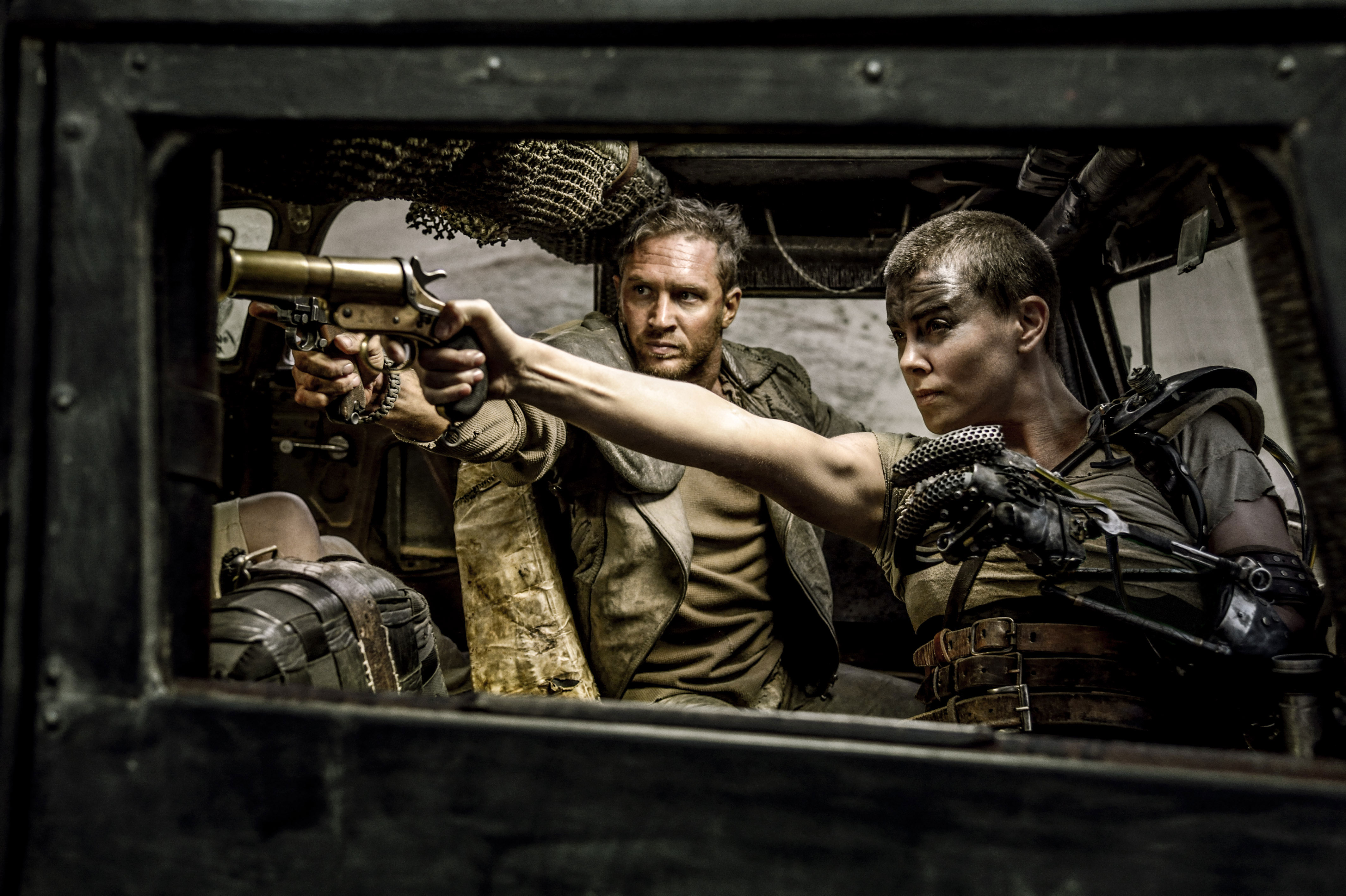 George Miller is not a man who grew up in today’s climate of shoot-first-and-CGI-everything-later. This is a filmmaker who took less than half a million dollars in 1979 and turned it into a classic of vehicular action and destruction, and, with more than ten times that amount for a sequel, created the enduring spectacle that is Road Warrior only two years later. He knows better than anybody that the appeal of those films was the sense of actual danger and destruction, a feeling that can never truly be recreated solely through the use of computers and animation. So, going behind the camera for the first time since 1998, George Miller looked at modern technology and, instead of a crutch, he saw a toolset.
George Miller is not a man who grew up in today’s climate of shoot-first-and-CGI-everything-later. This is a filmmaker who took less than half a million dollars in 1979 and turned it into a classic of vehicular action and destruction, and, with more than ten times that amount for a sequel, created the enduring spectacle that is Road Warrior only two years later. He knows better than anybody that the appeal of those films was the sense of actual danger and destruction, a feeling that can never truly be recreated solely through the use of computers and animation. So, going behind the camera for the first time since 1998, George Miller looked at modern technology and, instead of a crutch, he saw a toolset.
The most immediately apparent modern element in Mad Max: Fury Road is in its attention to color correction. Unlike the earlier films, Fury Road is set in a world oppressed by oranges and yellows, a deserted hellscape its inhabitants are eager to get away from. This is visually portrayed by the cultists’ otherworldly white-colored skin, which contrasts strikingly with its surroundings. The same can be said of the enormous geyser of water Immortan Joe temporarily showers over his followers at the start of the movie. The water is not only refreshing to the thirsty commoners, but to the viewer, replacing the red hues with cool whites and blues. There is a real sense of contrast here.
Post-production coloring is just one of the ways that Miller controls what is onscreen in Fury Road. Miller has said that he designed the movie in storyboard before a script even existed, and that care to detail shines through in the final film. The world feels alive and unique, full of crazy-but-functional reworkings of modern automobiles, otherwordly sandstorms (complete with fire and lightning and any other possible natural dangers), and madly theatrical denizens everywhere. Even better, roughly 90% of the action onscreen was actually staged and captured, not rendered on a server farm. When cars flip and shatter and explode, it is because stunt men and coordinators actually made it happen. It gives the film’s action a weight that has been largely absent from the last decade of filmmaking.
While the cinematography is often clever, it never feels winkingly so. Instead, everything is shot in the most functional and efficient way possible, always ceding importance to the insane images onscreen. Miller wants you to smile and laugh at his literal film-score-on-wheels, complete with several drummers on the back and a flamethrower-guitar equipped frontman in the front. He doesn’t care whether you notice the beautiful crane shot he used to capture it (although I certainly did).
That I’ve spent four paragraphs simply detailing the look of the film says something about its visual prowess, but the gorgeous presentation would mean nothing if Fury Road were not entertaining. As an action film, it is easily one of the best in recent years. Despite nearly every action sequence being a variation of Max (Tom Hardy) and Furiosa (Charlize Theron) trying to escape from Immortan Joe’s cult, there is never a feeling that we’re simply repeating the same thing. Each encounter introduces a new, even crazier element to the proceedings, whether it be the aforementioned sand storm, or the harpoon guns, or the men swinging wildly on giant sticks. These scenes are also perfectly paced, with just enough downtime in between to let the audience breathe but not so much time as to bore them.
The new Mad Max is worth seeing for the action and presentation alone, but it goes above and beyond by subverting expectations and having a thematic identity. It is easy to misidentify Fury Road as a guy’s flick, what with it being two hours of mayhem and destruction. The first appearance of the “breeders,” shot like something out of a Michael Bay directed Heavy Metal adaptation, wouldn’t do much to change your opinion. However, it ultimately transforms into one of the most feminist films of the year, a rallying cry for women feeling marginalized by their societies and wanting to choose their own paths. That it does so without a single scene of preaching to the audience is an achievement in its own right. Fury Road somehow manages to be hyper-masculine and overtly feminist, often within the same scene.
Light on plot, Mad Max: Fury Road is easier to talk about in terms of craftsmanship than it is with story. Regardless, it is a film I would highly recommend, and likely one that will only grow in reputation over the years. With enough support, this film could change the way that Hollywood thinks about spectacle. Here’s hoping.